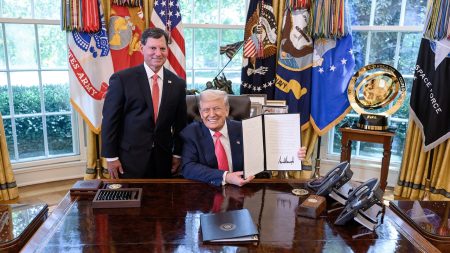Rep. Marjorie Taylor Greene’s threat to call a vote to remove House Speaker Mike Johnson has so far been all talk and no action. Greene introduced her resolution to call a vote of no confidence on the floor 38 days ago, but has not triggered it yet. It is believed that Greene would likely lose in her effort to remove Johnson, as some Republicans support him and Democrats might back him up. Another member besides Greene could also trigger the resolution, or Johnson himself could do so with confidence that he would defeat Greene soundly. If the resolution is triggered, the House would likely vote on a motion to either table or remove Johnson, causing chaos and paralysis in the House.
If the resolution is triggered and the House votes to remove Johnson, chaos would ensue as the House would be paralyzed and unable to take any legislative action until a new Speaker is chosen. An acting Speaker Pro Tempore would take over, but with limited power. The House would then take nominations for a new Speaker, with the successful candidate needing to receive an outright majority of all House members casting a ballot. This process could take several days, as it did last fall when the Speakership sat vacant for 22 days.
The selection of a new Speaker would depend on the math in the House, with the current breakdown being 217 Republicans, 212 Democrats, and six vacancies. If Johnson were to be removed, the House would need to choose a new Speaker to resume its legislative functions. This would likely lead to a period of uncertainty and conflict as different factions within the House vie for power and influence. Greene’s efforts to remove Johnson could have significant implications for the functioning of the House and the political landscape in Washington.













